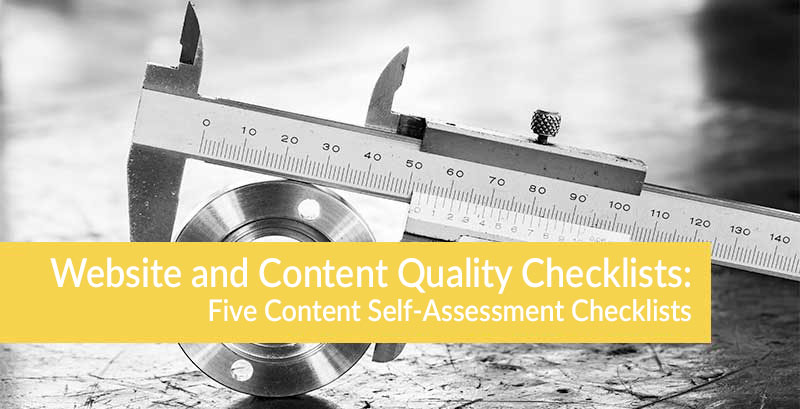One of the best things you can do for your SEO is to refresh your existing content. Taking the best of your old content and giving it a make-over can help improve your SEO.
This helps search engines find you and keeps your readers interested in what you’re writing about.
To do this effectively, you do need to take your content skills to the next level. It’s time to turn your good content into great content. Keep reading to learn the 6 ways you can easily refresh your content for better SEO.
How to Find Content to Update
Use your analytics tool to crunch your website traffic, looking for your most high-performing posts.
Look for content that has these key features:
- Inbound links. Remember, search engines use the number of inbound links as an indicator of authority and expertise.
- Traffic. You want to refresh content that is already popular or is on the cusp of breaking through. This is where it helps to have expertise in SEO and search analytics.
- Evergreen content. These are the blog posts and articles that offer useful advice, how-to’s, tips, and industry-related content that is always relevant and helpful.
- Keywords. Since you’re trying to rank in search engines for specific keywords, look for the content that already ranks for these keywords. And look for content that can be updated with these keywords (without keyword jamming of course).
Now, I get it – you might not have an analytics tool or know what keywords you should be ranking for. You’re not alone. This is why the Know Agency team is so useful.
Let us find the content that is ready for a refresh. And then let us take it one step further and do the content refresh for you. Contact us to get us working on your content, SEO, and search.
6 Ways to Refresh Your Content for SEO
This is how we refresh our own content at Know Agency. These are tried-and-true steps that do deliver SEO, search, and reader results.
1. Update the Content
Start by thinking about content accuracy.
Ask these questions about the blog, article, or whitepaper:
Is this content still relevant?
Have there been changes in your industry or company that impact the validity of your content?
Are there any errors or mistakes in your content?
Is there new research that you should reference and link to?
What kind of feedback did this content get the first time you posted and shared it?
This first important step in refreshing your content for SEO includes:
- Testing and updating all inbound and outbound links.
- Fixing spelling and grammar errors.
- Updating images and image ALT tags.
- Updating the meta description.
- Adding new content, such as new tips, advice, how-to’s, or lists.
- Updating the title and headlines. I suggest you read 5 Easy Tricks to Help You Write Catchy Headlines by Jeff Goins.
- Look at the call to action. Update this to reflect your current marketing and sales strategy.
2. Review and Update your Keywords
Your keyword strategy is not static.
You should be revisiting your keywords on a regular basis to ensure you’re up-to-date with user search trends and industry fluctuations.
The best way to do this is to use your analytics tools, such as Google Analytics, to review your search analytics.
This displays a graph of search traffic and volume. Then you can narrow this down based on keywords or search terms.
Now, I don’t want to get too deep here, but it’s these numbers that can help you determine how your keywords need to be updated.
When you have a new list of keywords, you need to expertly update your content without drifting into keyword stuffing. It’s important that when you refresh your content with these keywords that the content is natural and makes sense.
Remember, Google is very smart and can quickly identify content that has been keyword-jammed. If you have questions about how to update your content and keywords properly – contact me and I’ll help you out.
3. Update the Statistics/Data/Research
It’s important to link to studies, research, and resources that help provide authority and data to reinforce the key message in your content.
Look for and link to new studies and research that supports your premise. Remember to adjust your content to reflect this updated data.
This is a good time to think about planning out a series of articles, social media posts, and whitepapers about the key message in the piece of content you’re updating.
Can you do more to help your readers understand a specific topic? Does your core message need more than just one blog post?
4. EAT and YMYL Always
EAT and YMYL are keys to creating better page content.
EAT stands for: Expertise, Authority and Trust. Google uses these metrics to measure and quantify your website’s ability to be a leader in your field.
YMYL stands for: Your Money, Your Life. YMYL pages are those that could contain information that has a huge impact on your money or your life.
EAT and YMYL are critical to creating quality page content that helps you rank in Google.
Google confirmed this very fact with its February 2019 whitepaper, titled: How Google Fights Disinformation.
Not to be overlooked are the impacts the early-March Google core algorithm update is having on YMYL websites and content. Learn how the Florida 2 update is changing how YMYL sites are ranked.
You need to be recognized by Google as an expert, authoritative and trustworthy voice in your field.
When you write your content, you need to make sure it demonstrates:
- Expertise: highlights your expert skills or knowledge in your field.
- Authority: shows that the person writing the blog or other page content is an authority in your field.
- Trust: Google measures your website trustworthiness by analyzing your backlinks.
Too many website owners neglect the importance of YMYL. Google takes these pages very seriously.
In fact, Google’s Search Quality Guidelines, section 2.3 states: Some types of pages could potentially impact the future happiness, health, or wealth of users. We call such pages “Your Money or Your Life” pages or YMYL.
Make sure you’re not making mistakes with EAT and YMYL. This hurts your SEO, your Google search engine ranking, and your website validity.
As I wrote in EAT and YMYL: 5 Things You Need to Know, your EAT score directly impacts your SEO and search engine ranking. Read my blog post to learn how to create content that establishes expertise, trust, and authority.
5. Update the Layout
Remember the days of super long paragraphs and blinking text? Thankfully, these days are behind us. At least they should be for you!
Take a close look at this blog post. Look at the length of the paragraphs. Pay attention to the whitespace. This creates highly readable and scannable content.
Think about the content that you like to read online. It very likely makes good use of white space, has multiple headings, bulleted lists, and has a clear and obvious message.
Recent research shows that the average reader spends less than 15 seconds on your web page. This is not a lot of time.
This means you need to do the following:
- Break up your content with whitespace.
- Use bullets and numbered lists to share important details.
- Use bold text to keep the reader’s attention on your key points.
- Use headings and inline titles to make the content more scannable.
- Write content that gets to the point very quickly.
As you update your page layout, this is also a great time to look at your overall website navigation. Your readers don’t have the time or patience to struggle through a clunky website.
Make it easy for your readers to find and to read your content. This creates content that is more likely to be emailed and shared on social media.
6. Share on Social Media
One of the best ways to drive traffic to your refreshed content is to share it on Twitter, Facebook, LinkedIn, and Instagram.
Take care when writing your social media posts. Think of the keys to readability and how much time you really have to grab attention.
Think of character length, post format, the image quality, and who you’re trying to connect with.
Spend some time researching the best post formats for each channel. Short or long post? Question or statement? How many images? What have your followers clicked, liked, shared, and saved in the past?
Write social media posts that mesh with your overall brand and marketing messages.
Along with social media, remember to alert your website subscribers and newsletter readers to your updated content.
Send out a quick short alert along the lines of: We think you’ll be interested to know that we’ve updated our post titled The Facts on Social Media: Make Sure You’re Doing It Right. Give it a read and contact us to learn how the Know Agency team can get you the social media success your brand needs.
What Are the Next Steps for Your SEO?
It’s time to audit your website.
Give your content a thorough review. Make sure you know which pages are and aren’t ranking.
Review your keywords. Keep refreshing your content. Write more evergreen content. Spend time on social media engaging and listening.
Make refreshing your content part of your content strategy.
Your website is the best way you have of connecting with your readers. Make it easy for your readers to find the information they want.
Give them interesting, well-written, professionally researched, and engaging content.
The Know Agency team is here to help you. Ask us your SEO, search, content, and digital marketing questions.
We promise to listen and to help you continue to move forward.
About the author
Jane Phelps is the CEO/Partner at Know Agency. Jane is the main point of contact for our clients and handles all aspects of in-house SEO demands. This includes providing SEO training, competitive analysis, keyword research, algorithm analysis, and the review of all new content to ensure SEO best-practices are followed. Jane holds a Master’s Certificate in Online Marketing from the University of San Francisco, is BrightEdge Certified and is the head of the BrightEdge User Group in Atlanta, GA.



